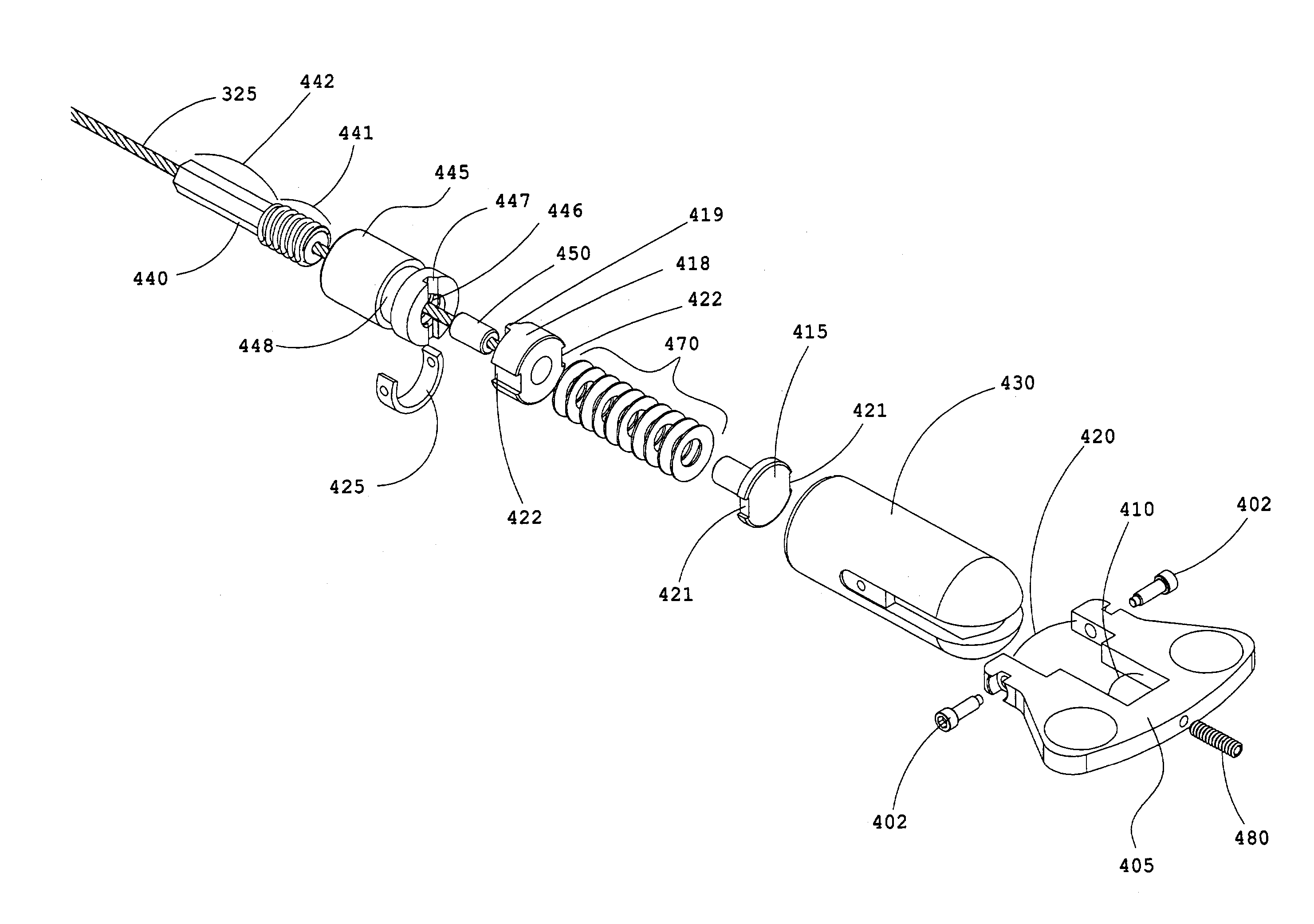Support arm for cardiac surgery
- Summary
- Abstract
- Description
- Claims
- Application Information
AI Technical Summary
Benefits of technology
Problems solved by technology
Method used
Image
Examples
Embodiment Construction
[0034]A support arm assembly 100 is comprised of a clamp base 200 an articulated arm 300 and a locking mechanism assembly and torque limiting mechanism 400.
[0035]Referring to FIG. 2, the clamp 200 base provides a mechanism for attachment by clamping onto the arms or rack of common or specialized sternal retractors (as illustrated in FIG. 9). The clamp base 200 includes a foundation 205 having a pair of spaced grip fingers 206207, a transverse cylindrical recess 208 at right angles to fingers, not shown, and a vertical central through hole 209. The upper face 210 has tapered recess 211. Opposing clamp base foundation 205 is clamp hook220 having a grip finger 222 which cooperates with fingers 206, 207 for gripping onto the retractor features. The clamp base 200 also includes a pivot 215 defining a pivotal axis 216 for the articulating arm to be radially positioned relative to clamp base 200. In the present embodiment, the pivot axis is oriented vertically relative to the clamp base fo...
PUM
 Login to View More
Login to View More Abstract
Description
Claims
Application Information
 Login to View More
Login to View More - R&D
- Intellectual Property
- Life Sciences
- Materials
- Tech Scout
- Unparalleled Data Quality
- Higher Quality Content
- 60% Fewer Hallucinations
Browse by: Latest US Patents, China's latest patents, Technical Efficacy Thesaurus, Application Domain, Technology Topic, Popular Technical Reports.
© 2025 PatSnap. All rights reserved.Legal|Privacy policy|Modern Slavery Act Transparency Statement|Sitemap|About US| Contact US: help@patsnap.com



